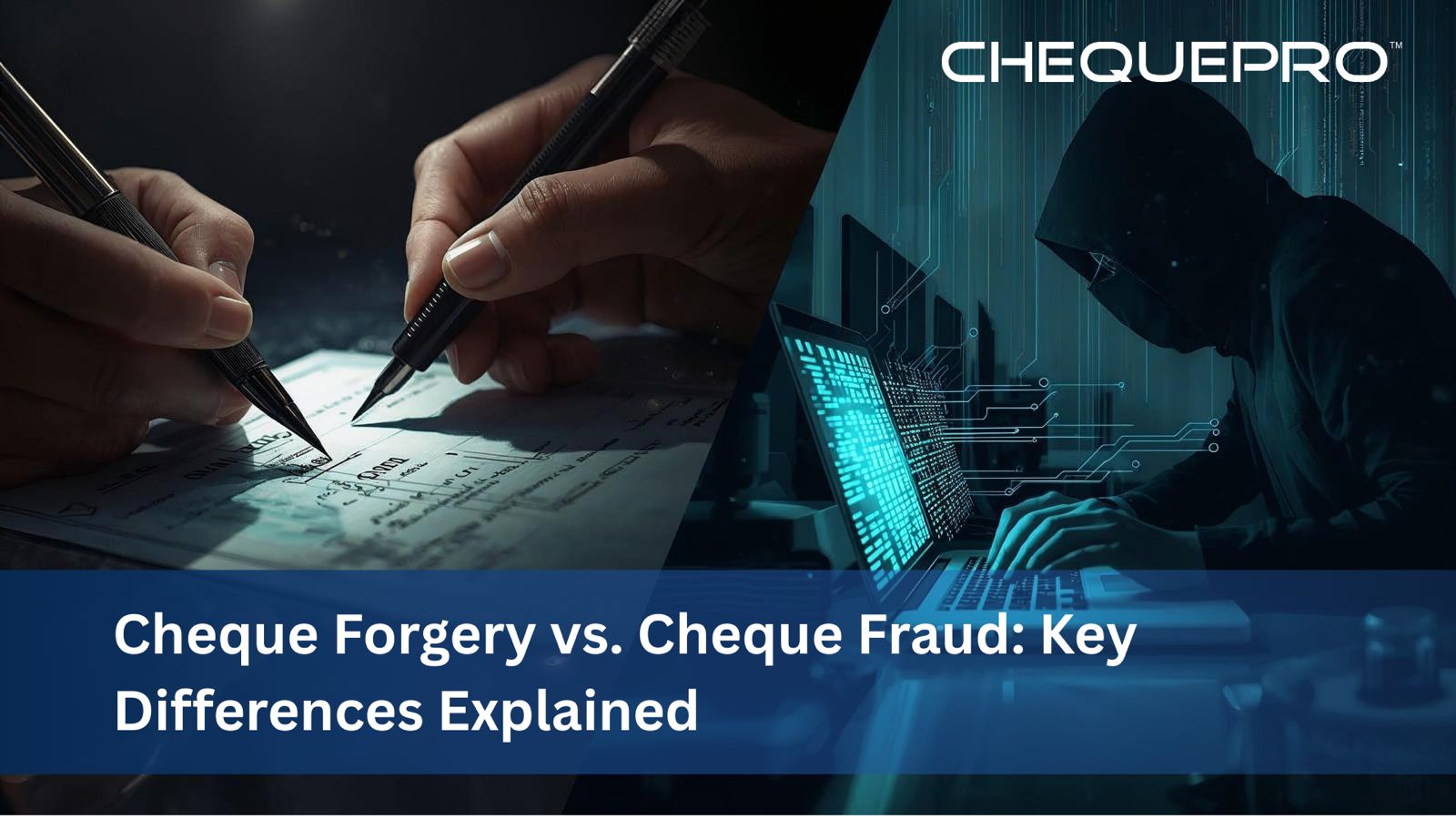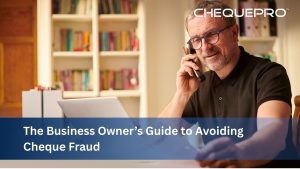Introduction
I still remember the first time I saw cheque fraud up close. A family friend who owned a little shop, one day, accepted a cheque that later bounced. At first, it looked like an honest mistake from the customer.
But later he found out the cheque had actually been altered. The original name was scratched off and replaced. That one incident left him stressed for weeks and even ate into his savings. And the thing is, stories like this aren’t rare. They happen more often than people think.
Now, here’s where most people get confused. Cheque forgery and cheque fraud sound similar, but they’re not the same thing.
Cheque Forgery is basically tampering with the cheque itself. So it could include changing signatures or the amount on the cheque. Fraud, on the other hand, is a bigger category. It includes forgery but also covers a whole range of tricks people use to steal money with cheques.
This blog will clear up any confusion you might have regarding the two.
What is Cheque Forgery?
Cheque forgery is when someone tampers with the cheque itself. They either make a fake cheque or change a real one without permission.
I have listed some of the main ways it happens:
Signature Forgery
In signature forgery, someone gets their hands on your cheque and signs your name at the bottom as if it were you. They’re pretending to be the account holder and hoping the bank won’t notice the difference.
Sometimes the signature is sloppy, but sometimes it’s surprisingly close. And unless you’re really familiar with the way the real person signs, you might not even notice.
Also Read: From Single to Bulk: Scale Your Cheque Printing Effortlessly with ChequePRO
Counterfeit Cheques
These aren’t real cheques at all. They’re printed from scratch to look like the real thing. Criminals may use high-quality printers or even copy designs from actual bank cheques.
You’d be surprised how professional some of these fakes can look. My advice will be that if a cheque feels even slightly “off,” double-check before accepting it.
Altered Cheques
When a real cheque is taken and then changed, it becomes an altered cheque. For example, the payee name or the amount might be erased and rewritten.
People even use chemicals like bleach to wash away ink. It may look like a genuine cheque from your cheque book, but the details aren’t what you originally wrote.
What is Cheque Fraud?
Fraud is the bigger story. Forgery is just one part of it, but cheque fraud takes in all the different ways people twist the system to steal money.
Let me give you a few examples:
Cheque Kiting
Cheque Kiting is when someone writes a cheque from one account, even if there isn’t enough money, and quickly deposits it into another.
Because banks take a bit of time to clear cheques, it looks like money is there when it really isn’t. For a short while, it creates a fake balance.
Paper hanging
That’s when people write cheques from accounts that are already closed or have no money left in them. By the time you realise it’s worthless, they’re gone.
Identity theft fraud
Here, criminals open accounts in someone else’s name by sometimes using stolen ID proofs and then start issuing cheques. It may look like a legitimate account, but the real person knows nothing about it.
Account hijacking
Through account hijacking, A fraudster manages to get hold of a real account. It could be done through stolen passwords or hacked details. Now the criminal starts writing cheques as if they were the real account holder.
Cheque washing:
Cheque washing is often done on a stolen cheque by washing away the original ink using chemicals like bleach. It makes the original name or amount disappear, so now the fraudster can write in whatever way they want. It still has the genuine signature, which makes it even dangerous.
So, the way I see it, forgery is mostly about faking or altering the cheque itself. Fraud is the bigger umbrella. It covers any scheme where cheques are used as a weapon to cheat.
Key Differences Between Cheque Forgery and Cheque Fraud
| Aspect | Cheque Forgery | Cheque Fraud |
| Scope | Narrow: focuses on altering or creating fake cheque documents | Broad: covers all unlawful use of cheques |
| Legal Definition | Requires creation or alteration of a document with the intent to deceive | Any deception to unlawfully gain money via cheques |
| Methods | Signature copying, counterfeit documents, and altered details | Forgery methods, plus kiting, identity theft, and account hijacking |
| Purpose | Making a false document look valid | Any method to extract money or property |
Prevention and Detection Methods
You can’t block every fraud attempt, but you can make it harder for anyone trying. And honestly, that can help a lot because fraudsters are generally just looking for the easiest target.
My advice will be to stick to a mix of old habits and new tools:
Old-school basics
- Always use cheques with watermarks or paper that reacts to chemicals. It makes tampering tougher.
- Don’t leave empty spaces. Fill every blank, and use a good permanent ink pen.
- Keep your chequebook locked away. And sign only when you’re ready to hand it over.
Tech solutions
- Banks now use AI to scan signatures, dates, and amounts. It picks up little things people might miss.
- Some systems use computer vision to compare cheques against known fraud patterns.
- For really large payments, biometrics like fingerprint or face ID can add an extra layer.
Everyday habits
- If you run a business, reconcile accounts often. And train staff to pause if something looks odd.
- If it’s your personal account, keep an eye on your statements. The moment you spot something strange or if a cheque goes missing, make sure to report it right away.
Also Read: Print Cheques Online Instantly: Fast, Secure and Easy
Conclusion
Cheque forgery and cheque fraud have changed shape as technology has advanced. Cheques may not be as common as digital transfers, but they’re still used often enough to keep attracting criminals.
From what I’ve seen, the line between losing money and staying safe usually comes down to awareness. That story of my family friend still stays with me, and it’s why I’ve been extra careful ever since.
So I will advise you to stay alert by using both the old tricks and the new tools as prevention methods, and don’t assume a cheque is ever too simple to be risky.





